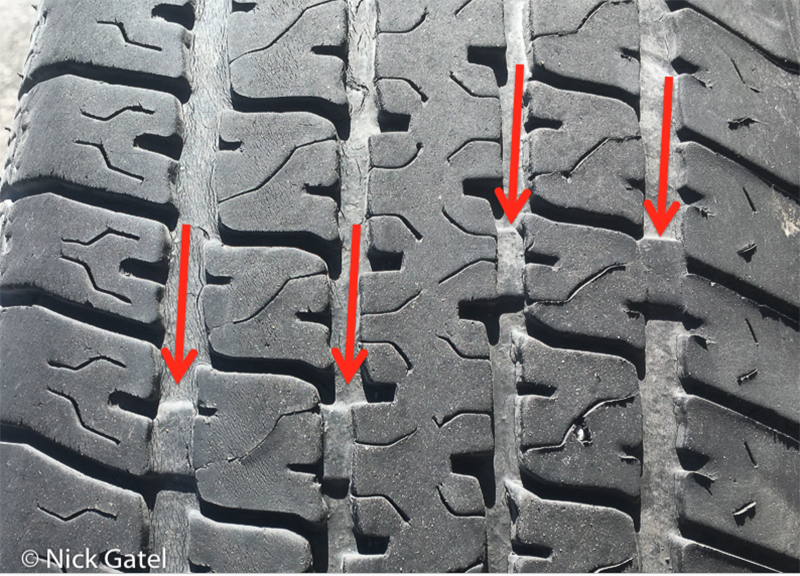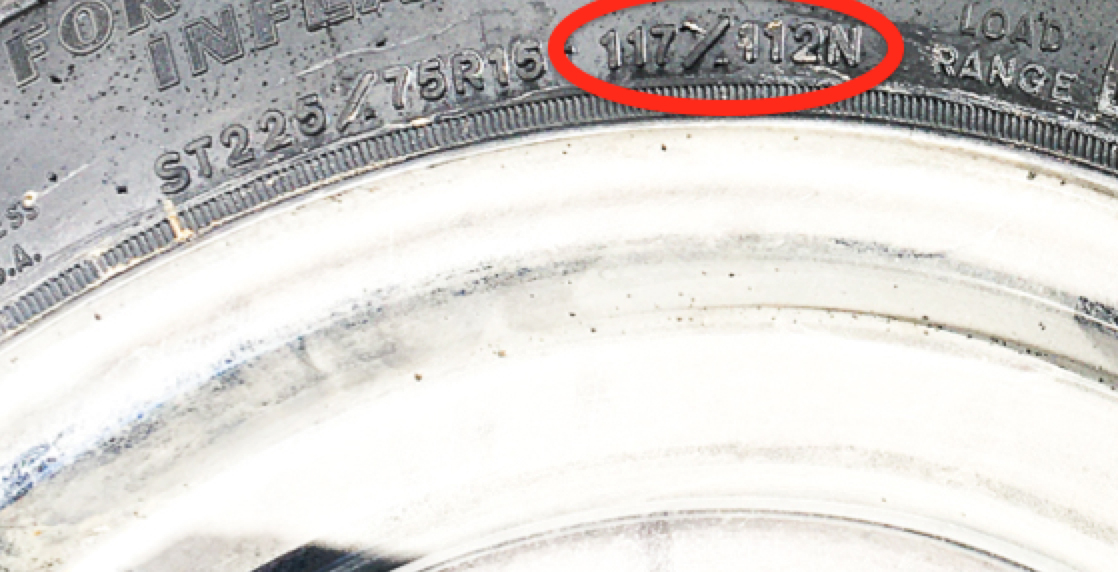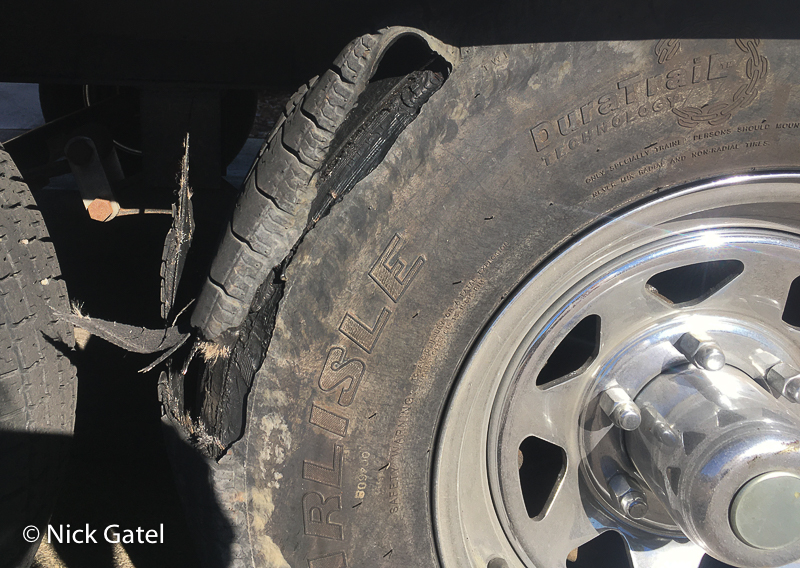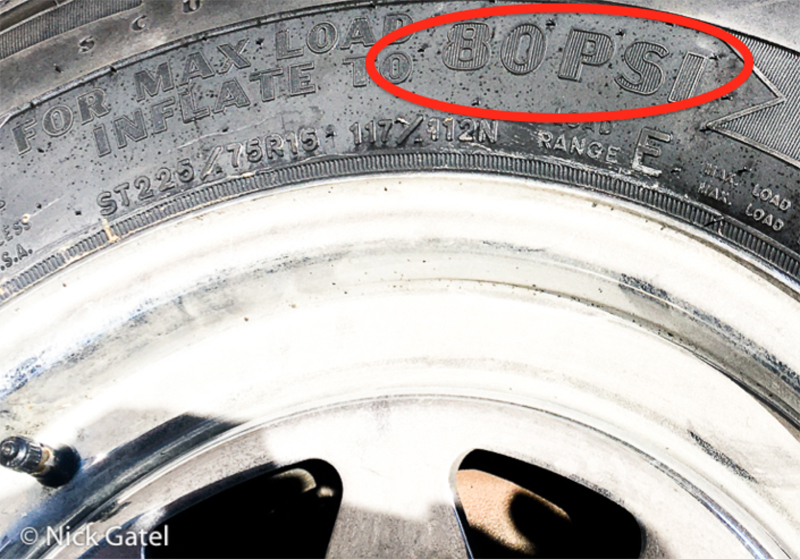Interesting that the most popular post on this site is Tire Pressure Secrets for Camping Trailers & Tow Vehicles with over 17,000 views since I published it in 2016.
Perhaps it isn’t popular and folks just think I’m an idiot. Given that, tires are important.
I just replaced the tires on our camper, which were a little over 4 years old. It might be helpful to share this information as to when tires should be replaced. Not when the tread is worn, which should be an obvious indicator, but is there a certain time limit for tires?
I was in the tire business for many years. Early on I got into the habit of looking at the tires on every vehicle I walked by. If it needed tires, I would leave my business card under the driver side windshield wiper. Yes, I was paid on commission.
Old habits are hard to break and to this day I still look at tires when walking past a vehicle. I do this with our own. I am very aware of the condition of our tires.
Winter Maintenance
Since we are stuck at home with the pandemic, plus Joyce is still in a walking boot after breaking her ankle doesn’t mean I don’t need to perform routine maintenance on our camper. Unlike most people who camp in the US, I have a different method of winterizing our camper. So last week I brought the camper home for maintenance.
Because our trailer is stored offsite in a covered facility and had been sitting in the shade for almost three months, I also wanted to park it in front of the house for a couple days so the solar panels could bring the battery bank to a full charge.
Tire Inspection
Knowing our tires were over 4 years old, and I like to replace trailer tires between the 3 to 4 years of age time frame, I took a very close look at all the tires even though we aren’t going camping for a while until things get better pandemic-wise.
The first step for inspecting tires is a general visual evaluation looking for defects, cracking, etc. The visual inspection passed, except on tire seemed to be wearing more than the other three. Time to measure the tread depth.
Tread depth gauges are inexpensive and are the best tool to compare not only all the tires, but to measure variances on a single tire.
Tire Problem Identified
Our tires originally had 9/32 of an inch of tread depth. Three of the tires had about 5/32 left. One tire had 5/32 on one side, but was down to 2/32 on the opposite side of the circumference. This indicated a big problem.

All tires come with tread depth indicators. When these indicators are flush with the tread, it signifies the tire only has 2/32 of an inch of tread. In most states it is illegal to operate a tire with 2/32 or less tread.
Since I keep an eye on our tires, this accelerated wear must have occurred on our last trip, thus indicating a serious problem with the tire.
Tread Separation
Even though the tire looked okay from a distance, I knew there was a problem with it. So I decided to buy a new set of tires before returning the trailer to storage.
The next morning I noticed the worn tire’s tread has separated from the tire overnight.
At this point I didn’t want to drive to the tire store because further separation could damage the trailer and I didn’t want to deal with a possible blow out. So I removed the tire and took it in for a new tire.
Changing a trailer tire (or any tire) is a hassle. What has made this really simple and quick is the Trailer-Aid I wrote about in How to Change a Trailer Tire Without a Jack
The process is simple, especially since I have an air compressor and air tools.
- Place the Trailer-Aid in front of the good tire (dual axles only)
- Pull the trailers forward until the good tire is centered on the Trailer-Aid
- Engage the emergency brake on the tow vehicle
- Chock the trailer wheels on the opposite of the trailer with the tire that needs to be removed
- Remove the bad tire
All of this took less than 5 minutes. The next morning I drove to the tire store to have the other 3 tires replaced, then took the camper back to our storage facility.
At What Age Should a Trailer Tire be Replaced?
There is no simple answer. Some tire manufacturers say 10 years max. Others state 5-6 years. None that I know have have special exceptions for trailer tires.
My experience is trailer tires don’t last as long as vehicle tires. Part of this is trailers sit a lot, and while sitting chemical reactions in the tire due to infrequent use start to break down the chemical compounds in the tire.
If a tire sits for long periods of time in the sun, UV radiation will shorten tire life. As will a lot of extreme hot temperatures.
Our trailer is stored in a shady spot, so it gets no UV radiation. We have hot temperatures 6 months of the year, but again, being in the shade, the temperatures are not as extreme as a black tire sitting in direct sunlight.
Given all of this, when I get near the four-year mark I start having tire problems. It doesn’t matter what brand of tire I use, the problems occur. On the flip side, the stock tires that came on our last two campers were cheap Chinese brands and didn’t make it to the three-year mark without problems.
So I suggest it might be a good idea to replace trailer tires at the 3 to 4 year mark, or at least do a lot of tire inspecting and tread depth measuring. But for sure, the longer you wait, the more likely you are to have a tire problem. I’ve been towing campers for over 40 years and have had waaay more flats with trailer tires than vehicles.
Choosing a New Tire
What brand? Which is best? Is a tire just a tire?
I have used many brands. Tires by specialty companies like Duro and Carlisle, name brands like Goodyear and Firestone, and off brands. I haven’t found a superior brand, but can tell you I have had the most problems with “off brands.”
Goodyear Endurance Trailer Tires
I ended up with these, and the price was at the high end of trailer tire offerings. Goodyear came out with these tires just a few years ago. First off, they are made in the USA, which is rare these days. Even Carlisle, who has plants in the US, makes their travel trailer tires in China.
Speed Rating
Until around 2015, trailer tires were rated for speeds up to 65 mph max. The faster you drive the hotter tires get. Every flat tire I have had occurred on a long drive, in hot weather, and driving at 65 mph. Because of this, I now try to keep my speed at 55 mph, just to keep the tires a little cooler at not push them at their maximum speed.
Starting in 2015 Trailer Tires were speed rated using the following designations:
- J = 62 mph
- L = 75 mph
- M = 81 mph
When Goodyear came out with their Endurance Trailer Tire, it was rated “N” or a max speed of 87 mph.

I’m never going to tow a trailer at 87 mph, but I figure a speed rating that high is going to provide a large margin of speed differential to help keep my tires cool.
But, how much of this is just marketing or actual fact? I’m a skeptic and pessimist with these kinds of things, although I have had good experience with Goodyear products and even managed a Goodyear tire store in the ’70s. But I’m not one of those brand loyal people.
Online Reviews
Generally the reviews for this tire are very good. But let’s be honest — reviews are often crap. Reviews are often just a first impression and the product hasn’t been used much, if at all. Most of the Goodyear Endurance reviews are for tires operated for 1,000 miles or less. Pretty useless in my opinion.
One Nice Touch
How many people can remember what the tire pressure should be? Unlike passenger vehicles or light trucks, tire pressure should be set at the vehicle manufacturer’s specification; not the maximum pressure indicated on the tire. Special Trailer (ST) designated tires should be operated at the maximum pressure indicated on the tire. But one often needs a magnify class to find the small print for max pressure on the tire.
Goodyear decided to make the largest printing on the sidewall the tire pressure.
Nice touch!
As often as we use our trailers, and since I always check and adjust pressure before a trip, and mid-trip during long trips, I can remember the pressure.
Made in China
I mentioned that the Goodyear Endurance tires are made in the US. I need to point out that products made in the US no longer automatically indicate superior quality, as Made in China doesn’t necessarily mean poor quality. So do your due diligence when researching products, and do not accept as fact anything a salesman tells you!
This website may be compensated for linking to other sites for sales of products. As an Amazon Associate I earn a small fee from qualifying purchases at no additional cost to the purchaser.


